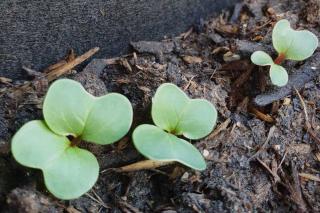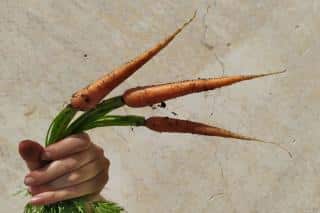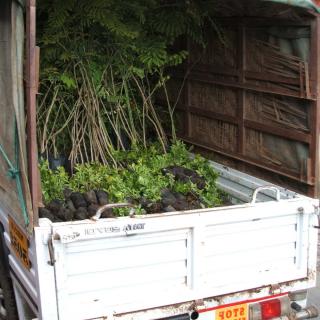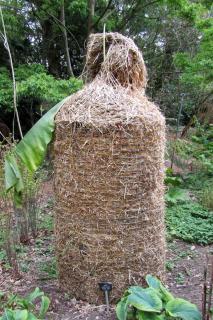

Even though the harvest is the highlight of Fall and autumn, other tasks like cleaning up and preparing the plot for the future spring sowing are also there to keep us busy in the vegetable patch.
Before resting in the winter…

After a beautiful summer, September is a month of abundance. Tomato, zucchini, eggplant, bell pepper and all sorts of beans produce at maximum yield.
Make the best of this abundance by preparing ratatouille and tomatoes preserves that you’ll savor over the coming winter.
Freeze excess string beans and dry your beans by hanging the plants upside-down in a ventilated spot.
Keep sowing more radish if you want to eat some in fall. Sow more corn salad to ensure you’ll have enough greens in the coming months. If space is available once you’ve pulled out your string beans, plant some spinach that should be ready by winter’s end. It is still time to plant the last leek plants to soil enriched with compost: they’ll be ready for picking in spring.
Extra September tips: keep an eye on late blight on tomatoes (remove affected foliage promptly), stake top-heavy plants before autumn winds arrive, and water in the morning to allow leaves to dry quickly. Start a new compost bay for fall inputs: layer “greens” (spent crop residue) with “browns” (shredded leaves, straw) at roughly 1:2 for steady decomposition.

In October, pull out your last tomato with their fruits in a luminous, ventilated space where the temperature is above 70°F (20°C). They’ll ripen perfectly. Pull out plants that won’t bear any more, as well as bean, zucchini and eggplant. Shred them up if they’re healthy, and cover free spaces with this mulch. You can also shred dead ornamental annuals for mulch, too.
Spread flax straw around your leek. Having such a protective layer will keep the soil from freezing and will make pulling them out easier.
Sow lentils, chick peas, broad beans and round peas directly in the ground. Under a cold frame or in a tunnel greenhouse, you may sow carrot for a spring harvest, and head cabbage varieties to transplant them in November. It is still time to plant your strawberry plants. Cover them with 4 inches (10 cm) of buckwheat hulls will produce humus and you won’t have to weed anymore.
Force your endive in a cellar or in a silo, and cut your asparagus short.
Prepare mint and rosemary cuttings and plant them in the ground immediately. Divide perennial savory, lemon balm, chives and replant them immediately as well. Plant white garlic and gray shallot.
Extra October tips: disinfect stakes, ties and pruning blades before storage; install slug barriers (beer traps, copper tape, wool pellets) around late greens; and cover bare soil you can’t plant with cardboard plus mulch to protect structure and soil life. Where winters are wet, elevate beds slightly and add paths of wood chips to improve drainage and access.

The absolute best time to plant trees and shrubs is the end of fall: roots maximize winter rains and spread in the soil, which ensures that the plants will thrive.
At the vegetable patch, follow up the seedlings you’ve started in October and sow lettuce in a covered place. Pull out diseased tomato plants that have been left behind and incinerate them. Divide your rhubarb plants. Harvest carrot, red beet and turnip if you can store them in a silo or in a protected and well-ventilated area. If you live in an area where winters are mild, simply leave them in the ground.
Extra November tips: when planting bare-root fruit trees, soak roots for an hour first, set a sturdy stake on the windward side, and water in thoroughly to settle soil around roots. Finish with a 2–3 in (5–7 cm) mulch circle, keeping mulch a hand’s width away from the trunk. In garlic/shallot beds, add a light straw mulch to curb weeds and buffer temperature swings.

Transplant lettuce that have been sown in the previous month. Protect the last remaining vegetables to harvest with plastic tunnel greenhouses. Spread straw around the foot of your artichoke.
In mild climate-areas, you can plant garlic, yellow onions and shallots (ordinary gray ones or ‘Jersey pink’ ones). Start germinating the potatoes that you wish to seed.
Completely cover vacant spaces with mulch or an opaque plastic tarp that will slow undesired growth and protect the soil from the pattering of the rain. In spring, you’ll remove these protections whenever you need to uncover a plot.
Extra December tips: net brassicas against hungry pigeons, insulate taps and drain hoses, and brush off heavy snow from polytunnels and cold frames to prevent damage. Turn your compost once before deep winter to re-aerate and then cap with a thick layer of leaves to conserve warmth.
M.-C. H.